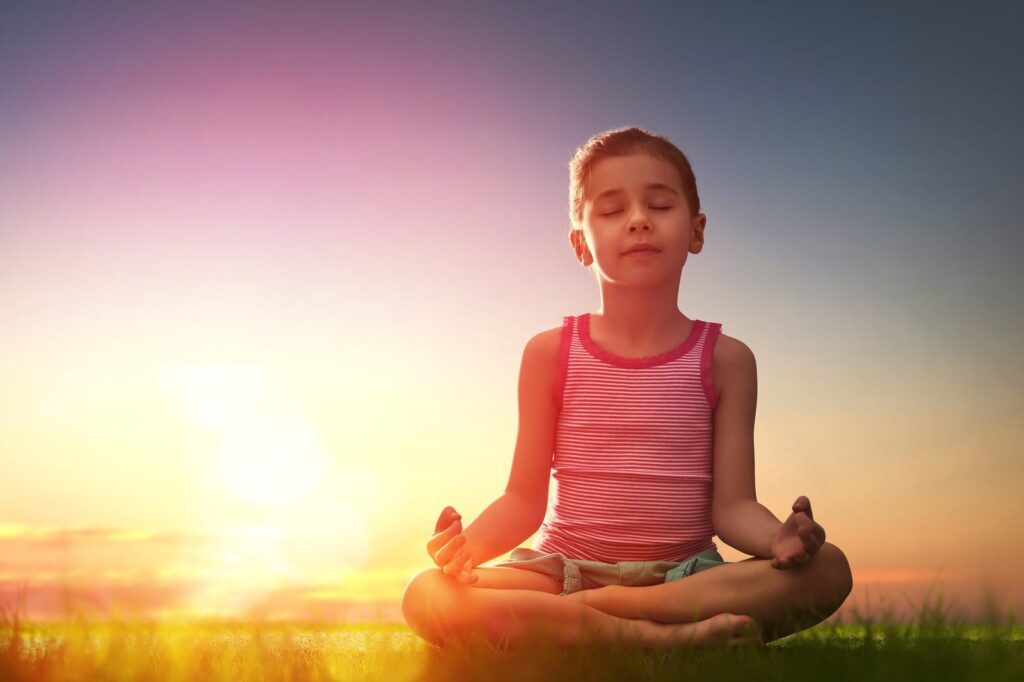Mindfulness is the basic human ability to be fully present, aware of where we are and what we’re doing, and not overly reactive or overwhelmed by what’s going on around us.

Mindfulness is a quality that every human being already possesses, it’s not something you have to conjure up, you just have to learn how to access it. When we’re mindful, we reduce stress, enhance performance, gain insight and awareness through observing our own mind, and increase our attention to others’ well-being.
Mindfulness meditation gives us a time in our lives when we can suspend judgment and unleash our natural curiosity about the workings of the mind, approaching our experience with warmth and kindness—to ourselves and others.
Tips for Introducing Mindfulness in Children
Mindfulness with children begins with you. You wouldn’t attempt to teach a child to swim if you had never been in the water yourself.
You know your child best – use your knowledge and intuition to guide you as to their readiness to learn mindfulness practices.
Explaining mindfulness using a snow globe – when the mind is busy or stressed it’s like a shaken up snow globe and we can’t see clearly. But if we wait calmly (focus on our breath), the snow (mind) will settle of its own accord and we can see more clearly.
Keep mindfulness practices short – a rule of thumb is one minute per year of their age.
Never force a child to meditate. It’s not another thing for them “to do”. It’s about being. Creativity, play and a light touch will encourage their curiosity about mindfulness.
Exploring the breath – e.g. blowing bubbles and windmills are simple fun ways to help younger children discover their breath. Older children report counting their breaths useful – e.g. breathing in to the count of 7 and breathing out to the count of 11.
Choose age appropriate practices– for toddlers and preschoolers try “belly breathing” – the child lies down with their favourite teddy on their belly and focuses on it moving up and down as they breathe in and out. * Older children may wish to place their hand on their belly to connect with the breath sensations while they count their breaths. N.B. – mind wandering happens to everyone and is not a problem – just bring the attention back to the breath with kindness.
Some children with breathing difficulties (e.g. asthma or panic attacks) may find focusing on the breath uncomfortable. Let them choose another part of the body to focus on such as the hands or soles of the feet.
It’s not all about sitting still – we can bring mindfulness to movement by paying attention to the body when we are walking, running, dancing, playing sport.
We can also bring mindfulness to our everyday activities such as eating, showering, brushing our teeth by paying attention to all the senses involved (rather than thinking about the activity). This can help us to be more present and slow down.




